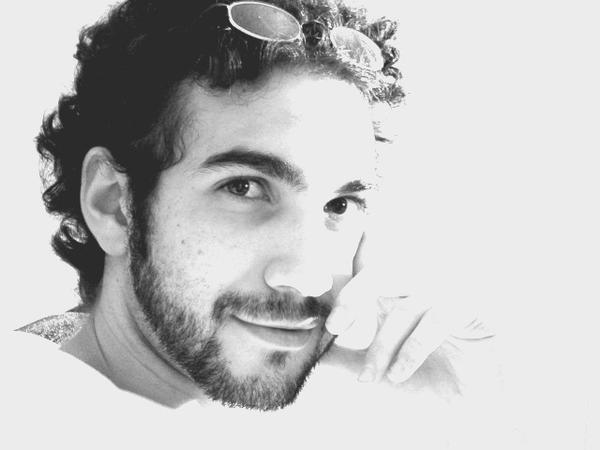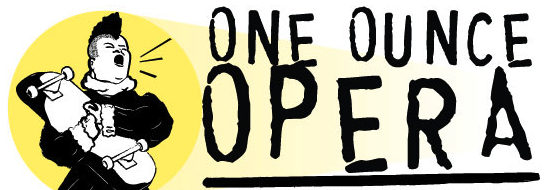On Friday, November 18th, OOO debuts their new concert series Fresh Squeezed Ounce of Art Song, where Maureen Papovich, Julie Silva, Dalton Flake, and Jake Jacobsen will perform winning composer George N. Gianopoulos‘ cycle “Thirteen Haiku, Op. 27 for Singers and Piano” The singers had these questions:

Julie S.: What inspired you to use Jack Kerouac’s texts and to choose these particular haiku poems from the thousands Kerouac wrote?
George: When my friend Jeremy Frank, a pianist for LA Opera, asked me to write a song cycle for a group he was working with at Wolf Trap, I only had a few weeks to select, set and engrave the text and music, and the short poetic form of haiku had always been interesting to me – and their short! I thought their brevity would allow me to explore something in song that I hadn’t before. While researching the text, I read thousands of haiku from dozens of poets, but there was a feeling of immediacy and relevance to the Kerouac text that drew me in. It was no easy feat narrowing it down from the thousands that exist (all available in a single volume, “Book of Haikus”), but I selected the thirteen that I used by trying image the musical landscape that they might set out – each one feels to be its own contained universe, which made setting them so much easier.
Dalton: How did your thought process work when deciding which voice types to place with certain poems? And how did you decide on the layout of the work (3 songs per voice type, then all together at the end, etc.)?
G: The instrumentation and voice type selection was based on the singers that Mr. Frank had in his group at Wolf Trap. Since it was such a good opportunity for me to work with such talented young singers at such a prestigious venue, I wanted to make the most of it. I also did not want to overwhelm the singers by giving them too much material, since this concert was just one of many they needed to prepare for, the music was delivered on relatively short notice – the ink was still wet! I felt three each would be a fair and balanced amount of material for each singer. I can’t say for certain how I determined which text would go to each voice type, but I imagine that I thought about the timbral qualities of each voice type and matched it with the intensity of the emotional content of the haiku.
Maureen: I’m singing the soprano part in Haiku and in all of my songs and my part in the choral piece, I start “low” and end “high” – around a high a or b. I find this interesting — could you speak to that?
G: Good question, though, I’m not sure I have a good enough answer. I try to approach the text in a way that I feel meets its emotionally intensity, so phrases like “The dream of change” or “something awful,” as in the first and third song, have a certain visceral quality to me that translates, I suppose, to a higher pitch.
Jake: What is the biggest challenge with setting such short texts?

G: Setting short text has many challenges. First and foremost, I wanted each one to feel like a mini monodrama – I wanted it to have the feeling of a normal length song and to match the musical qualities that one would expect in a longer work, thematic development, structure, interaction and variety, but in this small scale. Secondary, I tried to create a unique and individual atmosphere for each song and sustain that atmosphere for as long as naturally possible. While some songs may be shorter than others, I feel they are full and balanced.
________
George, known colloquially as Nick, began his musical study at age eighteen upon entering college. Enraptured by his first course, an Introduction to the World of Music, George immersed himself in the studies of classical music; the theory, the repertoire, the performance and the history. He immediately began taking group piano lessons and within a semester, advanced to private lessons with Dr. Robert M. Auler. Throughout his tutelage he also undertook the art of pedagogy, developing a private piano studio of twelve students as well as working as a church pianist and organist. After four years of intense study, George gave a senior recital that included performances of works by Mozart, Schumann, Rachmaninoff and Chopin as well as faculty performances of original compositions.
A native of Syracuse, New York and now a resident of Los Angeles, Gianopoulos’ music has been performed throughout Europe and America, including performances in China, Israel, Spain, England and Greece and regular performances in Southern California. George has been commissioned by The Glendale Philharmonic, The Chamber Opera Players of Los Angeles, Tala Rasa, The Symbiosis Ensemble, The Helix Collective, The Akropolis Quintet and the Malkin-Trybeck Duo, among others. He has been awarded by the American Viola Society, One Ounce Opera, Boston Metro Opera, Aurora Borealis Duo and was the Alumni-in-Residence (AIR) for the State University of New York at Oswego, where he worked with students and faculty. His music has been performed by members of the Los Angeles Philharmonic, Los Angeles Opera, Pacific Symphony and Los Angeles Master Chorale. Mr. Gianopoulos is the currently the Composer-in-Residence for the Los Angeles based Symbiosis Ensemble and concert series Music @ MiMoDa.
Find out more about Nick:
-composer webpage: www.georgengianopoulos.com
-Facebook artist page: www.facebook.com/georgengianopoulos/

